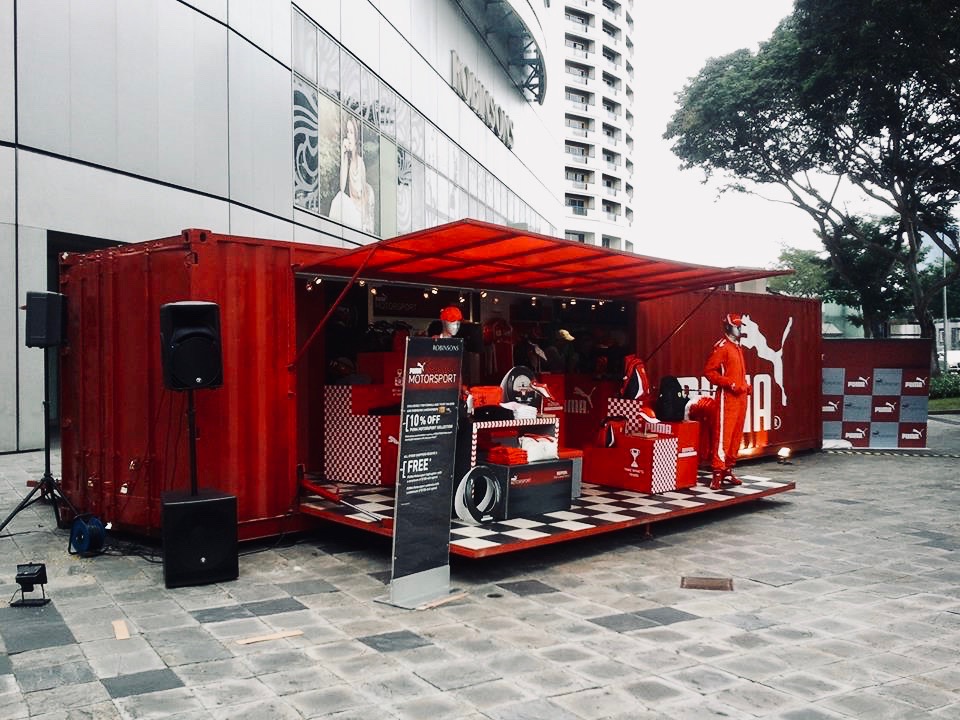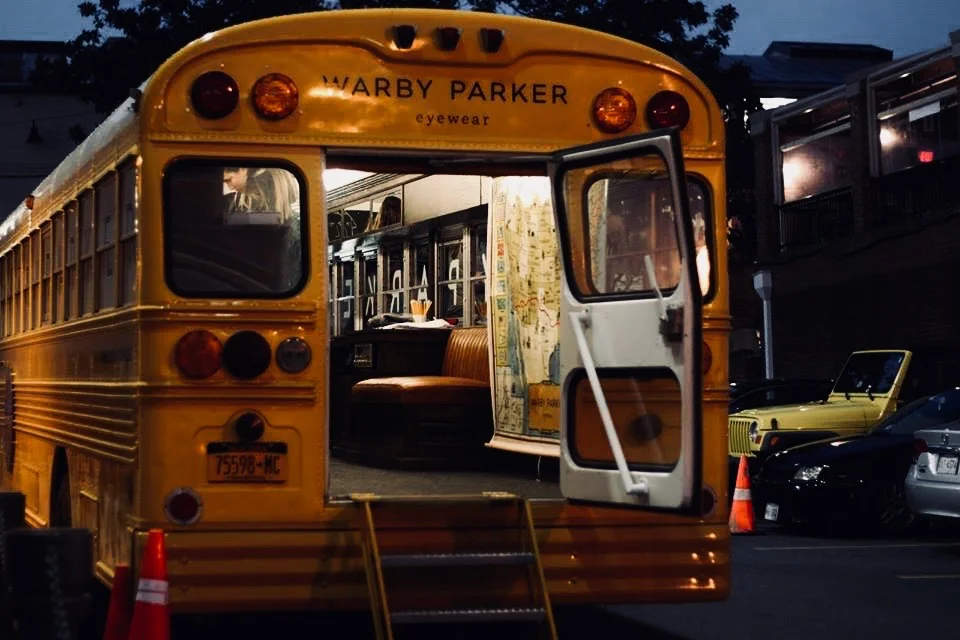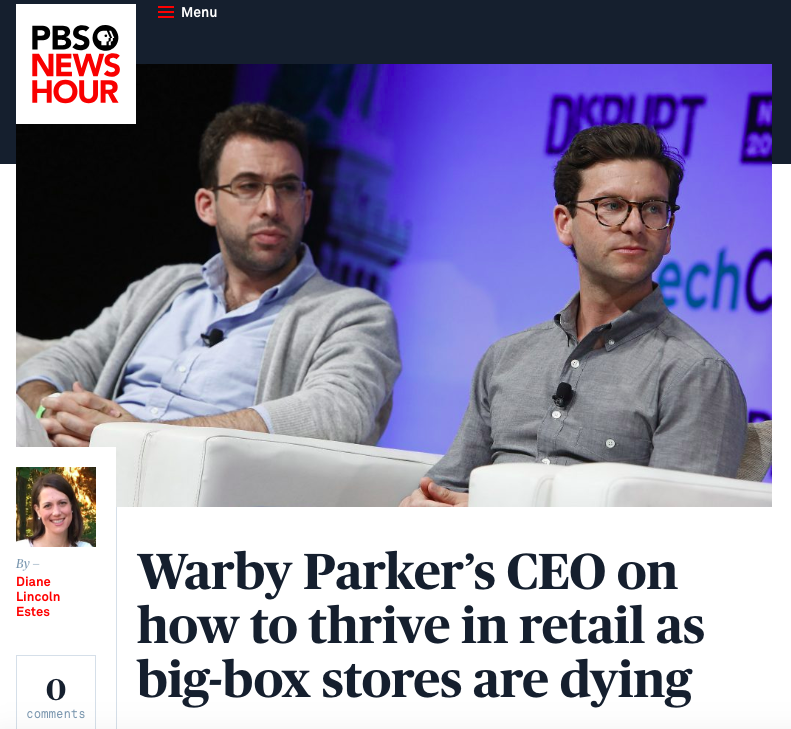Advertizing Brands Through Small Retail Locations: Online Shopping, Pop-Ups, and Omnichannel Retailing
Online shopping - Pop-Ups - Omnichannel
The way we shop has undergone a dramatic transformation in recent years. Traditional brick-and-mortar stores are closing their doors, and the rise of online shopping seems unstoppable. However, amidst this retail evolution, certain brands are proving that physical retail stores can not only survive but thrive by embracing innovative approaches and building strong brand-customer relationships. In this post, we'll delve into the success stories of brands like Bonobos, Warby Parker, Tesla, Apple, Nike, Adidas, Uniqlo, and Lululemon, which have harnessed the power of small retail locations in high-traffic areas.
Bonobos: The Guide-Shop Concept
Bonobos, initially an online-only clothing retailer, took a bold step when they recognized a customer demand that online shopping alone couldn't satisfy – the need to try on clothes before making a purchase. In response, they introduced a unique concept known as the "guide-shop." Instead of stocking a full inventory in their stores, they only display samples of their clothing, eliminating the need for extensive square footage. This strategy makes it cost-effective for them to secure prime real estate locations, particularly in high foot traffic areas.
What truly sets Bonobos apart is their unwavering focus on the shopping experience rather than in-stock inventory. Customers are encouraged to visit their guide-shops, try on clothes, and interact with knowledgeable staff. Once they've found their desired items, they can place orders online for home delivery. This innovative blend of online and in-store shopping enhances accessibility and creates a compelling in-store experience that engages and inspires customers.
Warby Parker: A Testament to Retail Success
Warby Parker, another online-born retailer that began with a "try at home for free" program, transitioned into physical retail locations. Their journey proves that the future of retail isn't exclusively digital. By designing their stores with a focus on aesthetics and comfort, Warby Parker successfully attracts visitors.
Their physical locations feature friendly and knowledgeable staff, making the purchase process smooth and enjoyable for customers. The goal is to turn these in-store shoppers into loyal online brand advocates. As co-CEO and co-founder Dave Gilboa explains, "We don't think retail's dead. We think mediocre retail is dead."
Tesla: Revolutionizing the Car-Buying Experience
Tesla, a brand known for innovation, has transformed the traditional car-buying experience. They opted for smaller showrooms in high traffic areas, often in upscale shopping centers. These showrooms not only display Tesla's cutting-edge electric vehicles but also provide an immersive experience. Visitors can interact with the cars, explore the technology, and learn about the brand's commitment to sustainability.
Unlike traditional car dealerships, Tesla's approach is low-pressure. There are no aggressive sales tactics. Instead, staff members are knowledgeable enthusiasts who can answer questions and provide information. Customers can place orders for their preferred Tesla model online, bypassing the conventional haggling and paperwork process. This approach has made car buying a more relaxed and enjoyable experience for consumers.
Apple: A Pinnacle of In-Store Experiences
Apple has long been a pioneer in creating immersive retail experiences. Their stores, located in high foot traffic areas around the world, are designed to be more than just places to buy products. They are gathering spots, hubs for creativity, and tech support centers. Apple stores offer workshops, technical assistance, and a space for customers to explore and interact with the brand's devices.
Visitors can try out the latest iPhones, MacBooks, and other gadgets, and the Apple Geniuses are available to help with technical issues or provide advice. The company has effectively turned its stores into a destination where people come to learn, create, and, of course, shop for Apple products.
Nike: Merging Innovation and Retail
Nike has embraced the concept of merging technology with in-store shopping. Their high-profile store locations feature digitally connected experiences that allow customers to access product information, check stock availability, and receive personalized assistance through their smartphones. The Nike app enhances the in-store experience, connecting online and offline shopping seamlessly.
Customers can also customize their sneakers with various designs and colors using in-store technology. The in-store experts guide them through the process, creating a unique and personalized product. This combination of technology, customization, and in-store expertise has enabled Nike to keep customers engaged and excited about their brand.
Adidas: Personalization and Innovation
Adidas is at the forefront of the personalization trend in retail. Their flagship stores, often located in high foot traffic areas, feature customization stations where customers can design their sneakers or apparel. These stations utilize cutting-edge technology to offer a wide range of options, from colors and materials to personalized labels.
Adidas understands that customers seek unique and personalized products, and these customization stations allow them to tailor their purchases to their preferences. It's a powerful way to engage with consumers and build brand loyalty.
Uniqlo: High-Tech Shopping
Uniqlo, a Japanese casual wear brand, has embraced technology in their retail spaces. Their high-tech fitting rooms use interactive screens that allow customers to view product information, change clothing colors digitally, and even request different sizes. This technology-enhanced experience
makes trying on clothes more convenient and enjoyable.
Uniqlo's approach to in-store technology enhances the overall shopping experience and keeps customers engaged. Their store locations in prime areas draw shoppers in with the promise of innovative shopping.
Lululemon: Community Engagement
Lululemon has built a loyal community around its brand. Their retail locations in high foot traffic areas often host yoga and fitness classes, running clubs, and other community events. This approach turns their stores into hubs for active and health-conscious individuals, fostering a sense of belonging and shared values.
By creating a space for customers to not only shop but also connect with like-minded individuals, Lululemon reinforces its brand identity and builds a strong sense of community.
In conclusion, the retail landscape is not dying; it's evolving. Brands that seamlessly combine online shopping with creative showrooms, pop-up locations, and captivating in-store experiences are navigating a unique path in this ever-changing environment. The key is adaptation to the needs and preferences of modern consumers while simultaneously fostering strong brand-customer relationships. This approach empowers these brands to not only survive but thrive in high foot traffic areas, underscoring that retail is very much alive and flourishing.
POP-UPS: A Dynamic Marketing Strategy
In recent years, pop-up shops have emerged as a dynamic and versatile marketing strategy for brands and retailers seeking innovative ways to engage with consumers, create excitement, and drive sales. This "here today - gone tomorrow" concept has gained prominence in the ever-evolving retail landscape, proving to be a valuable tool for a variety of purposes.
Temporary Boost in Foot Traffic
Pop-up shops offer a temporary and exclusive retail space for brands to connect with their target audience. By strategically selecting high foot traffic locations, brands can instantly capture the attention of a large number of potential customers. This surge in foot traffic can be especially beneficial during peak shopping seasons, promotional events, or product launches.
Creating Buzz and Excitement
One of the primary objectives of pop-ups is to generate buzz and excitement. The limited-time nature of these shops creates a sense of urgency that encourages consumer engagement. People are more likely to visit a store that won't be there in a few weeks, knowing they might discover something unique or participate in a special event. This heightened anticipation can lead to increased customer interaction, brand visibility, and social media sharing, all of which contribute to a successful marketing campaign.
Introducing New Products and Limited Editions
Pop-up shops are an ideal platform for introducing new products or showcasing limited editions. Brands can use these temporary spaces to unveil innovative items, test the market's response to a new line, or present a unique, time-limited offering. This approach allows brands to create a buzz around their products, fostering a sense of exclusivity that drives consumer interest and sales.
Fostering Engagement and Interaction
Pop-ups encourage direct engagement and interaction between brands and consumers. Brands can design these spaces to be interactive and immersive, providing visitors with an experience they won't forget. Engaging activities, product demonstrations, and hands-on experiences give people a reason to explore the shop and learn more about the brand. This personalized interaction allows brands to establish a deeper connection with their audience and build lasting relationships.
Testing Markets and Consumer Preferences
Pop-up shops offer a low-risk opportunity to test new markets and understand consumer preferences. Brands can experiment with different locations, products, and store layouts without committing to long-term leases or extensive expenses. This experimentation allows them to gather valuable data and insights about consumer behavior and preferences, enabling more informed decision-making for future strategies.
Generating Brand Awareness and Visibility
While pop-ups are temporary, they can leave a lasting impression on consumers. Successful pop-up shops become memorable brand experiences that people talk about, share on social media, and remember. This heightened brand awareness and visibility extend beyond the duration of the pop-up, benefiting the brand in the long term.
In conclusion, pop-up shops have evolved into a go-to marketing strategy for brands and retailers looking to create temporary boosts in foot traffic, generate excitement, introduce new products, foster engagement, test markets, and enhance brand awareness. As consumers increasingly seek unique and memorable shopping experiences, pop-ups offer a dynamic and effective way for brands to connect with their audience and thrive in a rapidly changing retail landscape.




